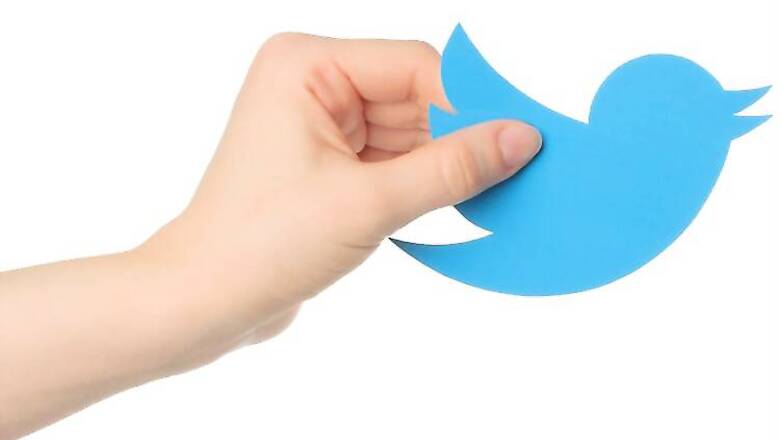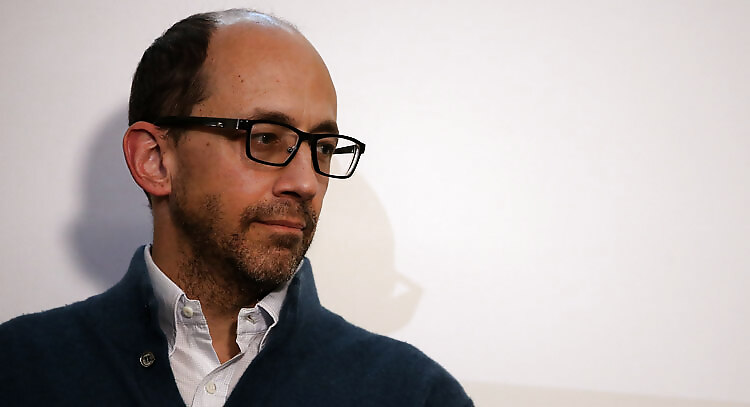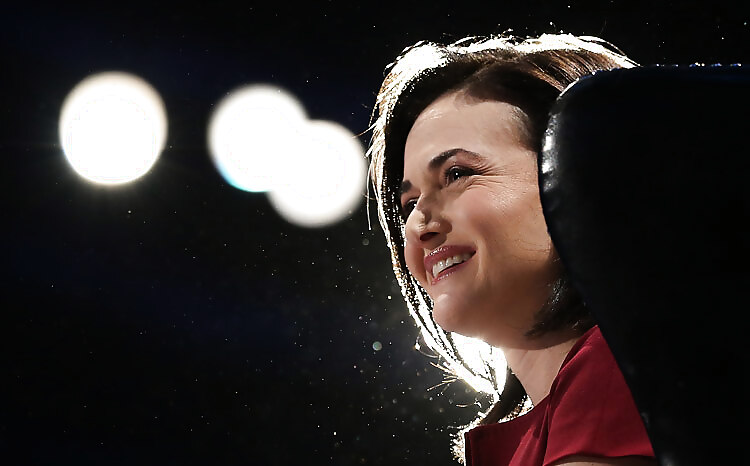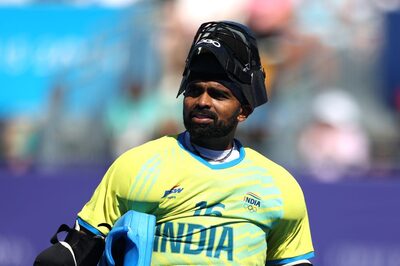
views
A defining feature of Twitter is: it ensures you write only in 140 characters including punctuation marks (and space between words is a punctuation mark, too). With its unique character-compliant feature, it has imbibed among its users the ability to express pithily irrespective of the truncated words.
After Facebook, Twitter is the most popular social media networking site followed by LinkedIn.
Why did Twitter's share prices slightly rise as its CEO resigned?
Richard 'Dick' Costolo the CEO of Twitter has resigned: his last day as CEO is June 30, 2015. From July 1, Jack Dorsey, the co-founder and former chairman (once ousted by the board), will be the interim CEO (popularity of sites on Internet are interim, too). The 'Pinned Tweet' on Costolo's Twitter profile reads: "Friends, Romans, countrymen: We haven't changed our mission. It's here: … Our mission: To give everyone the power to create and share ideas and information instantly, without barriers." He is reiterating Twitter's relevance: somewhere in Southern Hemisphere…? Why to use an old tweet instead of finding a relevant one: his potential to make Twitter better had peaked, and troughed: Exiting.
Friends, Romans, countrymen: We haven't changed our mission. It's here: https://t.co/1iAniekTo8— dick costolo (@dickc) November 13, 2014
Many Internet denizens have virtual friends. But there are no Romans saving for Roman attires in antique and second-hand shops. There are countrymen but countrymen can do away with Twitter.
It could be inferred that Costolo's exit came at Twitter because he could not identify who his users could be: Friends, Romans, countrymen (note the 'c' in countrymen!). And, the shareholders grew impatient with him as the share prices were not rising and so was the user base: subscribers did not rise like they rose on Facebook and WhatsApp. The moment he resigned the shares of Twitter increased slightly.

Under Dick Costolo, the Twitter has seen a meteoric rise (and there could only be a fall: at least the fall that follows summer). As its CEO since 2010 (Twitter was launched in 2006), he took the Twitter to new heights. The users on Twitter quadrupled: it has 302 million active monthly users, 500 million tweets are sent everyday, 80% of its users are active on mobile (not on desktop, not on laptop) gadgets, has 3,900 employees in 35 offices and it is supported in 33 languages. The stellar contribution of Costolo to the company was to introduce 'Promoted Tweets' as a way to kick-start revenues, and also introduced the firm's IPO in 2013 to much acclaim but that salutation fizzled out though the company is valued at $24 billion. Costolo's resignation indicates that the user base is not growing compared to previous years' growth rate: and Twitter needs a new man, or a new woman (Sheryl Sandberg?).

Most of the users on Twitter are celebrities, media organisations and their employees, indie hacks and a sprinkle of politicians from democratic states.
British Prime Minister David Cameron's first tweet said: "I'm starting Conference with this new Twitter feed about my role as Conservative Leader. I promise there won't be 'too many tweets...'"
He stuck to his statement. In over 6 years, he tweeted about 25 tweets a month, and has more than a million followers (a number that is more than the circulation of Times, Independent, Guardian and Financial Times).
Politicians became source of news on Twitter: they spoke to their stakeholders (voters): why to send a press note or have a press conference?
Twitter is trolled by journalists. Who wouldn't carry political and human interest stories such as the one tweeted by David Cameron: "My best wishes to George Kirby (103) and Doreen Luckie (91), set to become the world's oldest newly-weds in June."
My best wishes to George Kirby (103) and Doreen Luckie (91), set to become the world's oldest newly-weds in June. pic.twitter.com/ohPROejSHI— David Cameron (@David_Cameron) May 4, 2015
Indian Prime Minister Narendra Modi, since he joined Twitter in 2009, has tweeted 8,352 times, follows 1,219 users and has 13 million followers (1.3 crore!). He is tweeting at an average of 3 tweets a day! What a treat…never before an Indian leader has communicated as assiduously as Narendra Modi with Indians, Bharatiyavasis, Hindustanis, and also NRIs. With 1.3 crore digital followers on Twitter, his reach is greater than the combined circulation of Dainik Bhaskar, Dainik Jagran, The Times of India, Malayala Manorama, The Hindu, The Hindustan Times.
For media professionals and beat reporters, Twitter is a source of news not only to post the 'breaking news' but also to access latest developments posted by popular personalities, reclusive and aestivating yesteryear stars, and also digital users who have donned the role of citizen journalist either knowingly or unknowingly.
India is a promising country for Twitter (occupies 17% online social media space) but the users are unlikely to grow, the way they subscribed to it, in the coming areas. It is also for celebrities, and their milieu who constrained by lack of time they take to Twitter (follow me: I will not follow you) to exchange personal messages otherwise could have been done in a more touching, or tangible way: A husband wishing his wife on a birthday via Twitter?
As Kiran Kher, the BJP MP and Bollywood actress, stepped in as an 'infantile sexagenarian', her husband Anupam Kher tweeted: "Happy Birthday @KirronKherBJP. Love, Peace & Happiness Always. Hope u serve ur people well & continue to do excellent work in films & TV.:)" Is it spousal message, or a message for media? Mainstream media, reported!
Haewoon Kwak, Changhyun Lee, Hosung Park, and Sue Moon at the Department of Computer Science, KAIST, Daejeon in South Korea in 2009 researched on the topic "What is Twitter, a Social Network or a News Media?". They concluded in their topographical analysis of Twitter that it is a non-power-law follower distribution, a short effective diameter, and low reciprocity which is mark a deviation from known characteristics of human social networks. Among other aspects, they also found that it is the platform to know about the top trending topics (a barometer to know about what's happening for politicians, and journalists), and it is the platform of diffusion of information. In their analysis, the first quantitative study on the entire Twittersphere and its information diffusion in it, they dissected that unlike on most online social networking sites such as Facebook or MySpace the relationship between the 'followed' or 'follower' and being 'followed' requires no reciprocation.
Possibly, the lack of reciprocation is its nemesis. However, trivial or virtual the reciprocation is: but everyone needs reciprocation!
And reciprocated users share homophily: politicians follow superior politicians, movie stars run behind graded and starred stars, reporters sheepishly follow highly-paid and highly-visible journalists: how long one can follow someone without ever being, virtually, touched, if not followed, ah?
With no promise of increasing user base, and the lack of potential to grow at par with Facebook, what will be Twitter's fate on vernal equinox of 2016 when it celebrates its 10th anniversary? Either it is saturating, or unable to withstand the onslaught of other social media sites that have better and superior features, or easier and better messaging platforms: WhatsApp.
(Kovuuri G Reddy is the author of 'Handbook of Journalism and Media: Indian, Bharat, Hindustan.' He can be reached at [email protected])


















Comments
0 comment